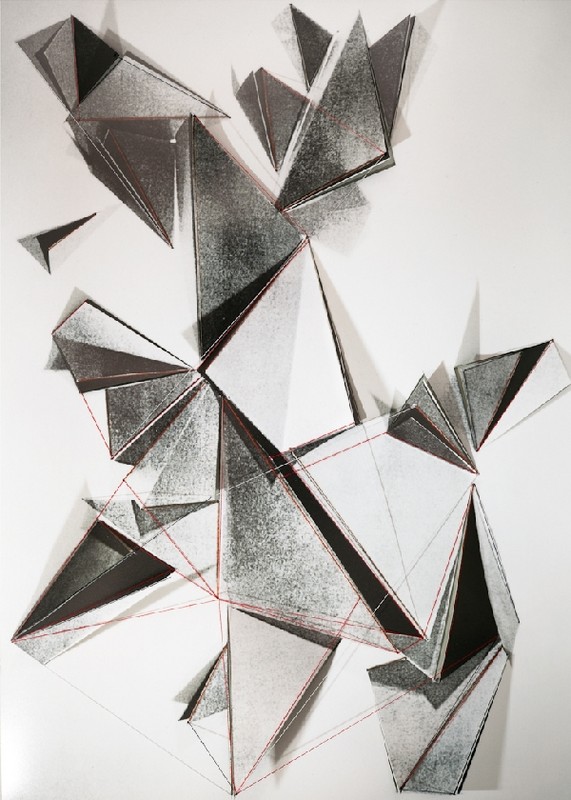Christiane Feser / Sebastian Kuhn
08 Jun - 25 Aug 2012
CHRISTIANE FESER / SEBASTIAN KUHN
8 June - 25 August 2012
With her exceptional Constructions, Christiane Feser (*1977, Würzburg) exclusively explores through analogue means the basic conditions of the photographic medium: the inevitable reduction of three-dimensionality on a two-dimensional sheet of paper and thus the impaired reproduction of reality through the medium of photography. Her subjects of paper are build primarily for the purpose of the photograph.The prints of these spatial premises are then turned into plastic compositions which are further photographed and re-organized. An interplay between production and reproduction occurs, blurring the meaning between an original and a copy. The capture of time, one of the main fascinations of photography, is fullfilled here through Feser’s explicit integration of the process.
Sebastian Kuhn (*1977, Krumbach) uses familiar elements, often part of everyday commodities, in order to build his sculptures. Nevertheless, they appear as if not from this world. There is something, in the widest sense of the word, phantasmagorical about them. Kuhn refers repeatedly to the well-known and accomplishes a narrow path between recognition and alienation. His sculptures and fictional space experiences encourages us to question our perceived reality and what we take for granted, and to take a closer look into our familiar horizon. Kuhn brings the viewer right into the picture. Despite or perhaps exactly because of this expanded notion of sculpture, it is evident that he is caught in the very foundations of classical sculptural tradition.
8 June - 25 August 2012
With her exceptional Constructions, Christiane Feser (*1977, Würzburg) exclusively explores through analogue means the basic conditions of the photographic medium: the inevitable reduction of three-dimensionality on a two-dimensional sheet of paper and thus the impaired reproduction of reality through the medium of photography. Her subjects of paper are build primarily for the purpose of the photograph.The prints of these spatial premises are then turned into plastic compositions which are further photographed and re-organized. An interplay between production and reproduction occurs, blurring the meaning between an original and a copy. The capture of time, one of the main fascinations of photography, is fullfilled here through Feser’s explicit integration of the process.
Sebastian Kuhn (*1977, Krumbach) uses familiar elements, often part of everyday commodities, in order to build his sculptures. Nevertheless, they appear as if not from this world. There is something, in the widest sense of the word, phantasmagorical about them. Kuhn refers repeatedly to the well-known and accomplishes a narrow path between recognition and alienation. His sculptures and fictional space experiences encourages us to question our perceived reality and what we take for granted, and to take a closer look into our familiar horizon. Kuhn brings the viewer right into the picture. Despite or perhaps exactly because of this expanded notion of sculpture, it is evident that he is caught in the very foundations of classical sculptural tradition.

